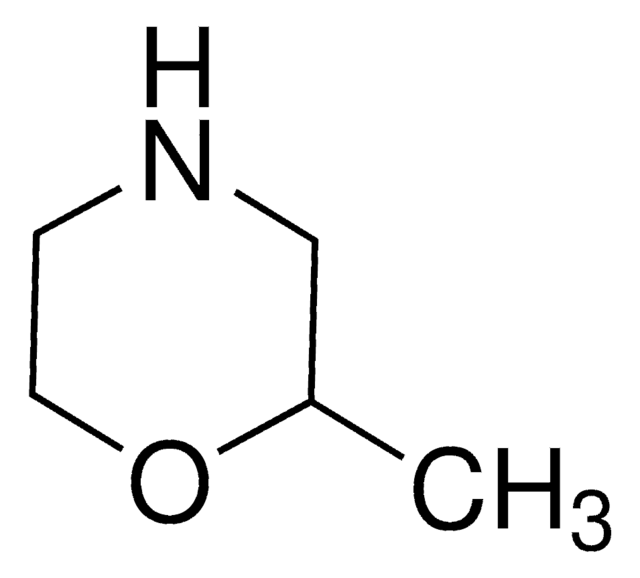M56557
4-Methylmorpholine
ReagentPlus®, 99%
Sinónimos:
N-Methylmorpholine, NMM
About This Item
Productos recomendados
vapor density
>1 (vs air)
Quality Level
vapor pressure
18 mmHg ( 20 °C)
product line
ReagentPlus®
assay
99%
form
liquid
refractive index
n20/D 1.435 (lit.)
bp
115-116 °C/750 mmHg (lit.)
mp
−66 °C (lit.)
density
0.92 g/mL at 25 °C (lit.)
SMILES string
CN1CCOCC1
InChI
1S/C5H11NO/c1-6-2-4-7-5-3-6/h2-5H2,1H3
InChI key
SJRJJKPEHAURKC-UHFFFAOYSA-N
¿Está buscando productos similares? Visita Guía de comparación de productos
Categorías relacionadas
Application
Legal Information
signalword
Danger
hcodes
Hazard Classifications
Acute Tox. 4 Oral - Eye Dam. 1 - Flam. Liq. 2 - Skin Corr. 1B
Storage Class
3 - Flammable liquids
wgk_germany
WGK 1
flash_point_f
53.6 °F - closed cup - DIN 51755 Part 1
flash_point_c
12 °C - closed cup - DIN 51755 Part 1
ppe
Faceshields, Gloves, Goggles, type ABEK (EN14387) respirator filter
Certificados de análisis (COA)
Busque Certificados de análisis (COA) introduciendo el número de lote del producto. Los números de lote se encuentran en la etiqueta del producto después de las palabras «Lot» o «Batch»
¿Ya tiene este producto?
Encuentre la documentación para los productos que ha comprado recientemente en la Biblioteca de documentos.
Los clientes también vieron
Nuestro equipo de científicos tiene experiencia en todas las áreas de investigación: Ciencias de la vida, Ciencia de los materiales, Síntesis química, Cromatografía, Analítica y muchas otras.
Póngase en contacto con el Servicio técnico










